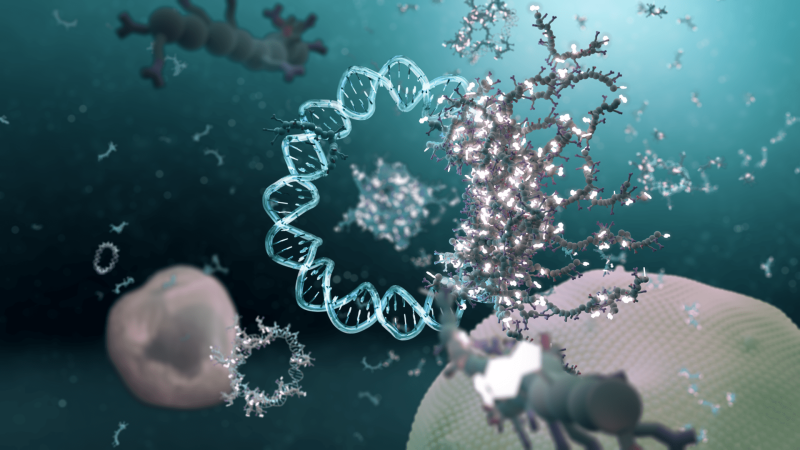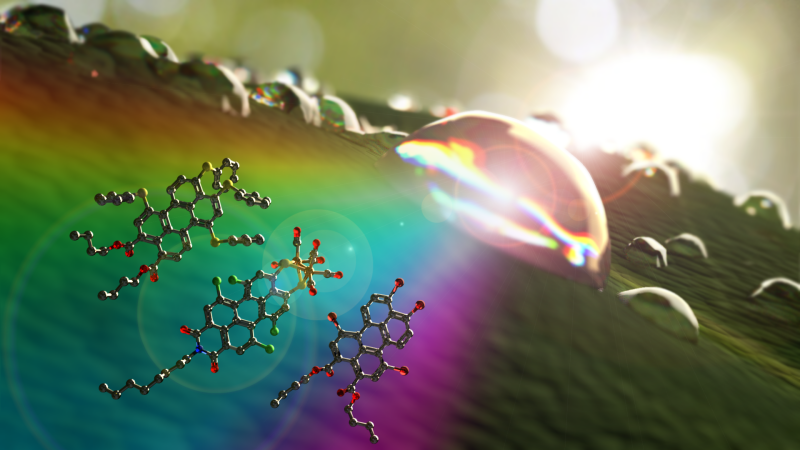Our research interests are primarily in the field of organic and polymer chemistry and involve the synthesis, characterization and evaluation of fluorophores, small therapeutically active molecules and chemically defined carriers, nanomedicine and biosensing. Examples include ultrastable NIR absorbing rylene dyes for site-selective labeling of proteins in living cells, pharmaceutical carriers for immuno assays of cancer and bioorthogonal modification of therapeutic peptides and proteins
Guanidinium containing polymers
Our work is focused on the design of positively charged polymethacryamide based carriers that are applied for the delivery of DNA or siRNA. In addition to the influence of themonomers, we also investigate the advantages and disadvantages of the incorporation of hydrophobic and cationic monomers, their arrangement in linear polymers (statistical,gradient, block-shaped) with regard to their binding affinity, transfection efficiency, the condensation efficiency of DNA and as well as the size of the resulting polyplexes.
Polymer DNA
Image: Kalina Peneva
Photostable chromophore for biological and medical applications
One commonly used method capable of untangling the internalization pathway that drug carriers take inside the cell is near infrared (NIR) fluorescence imaging. However the quality and reproducibility of the data recorded with this technique are strictly dependent on the photophysical properties of fluorescent dyes used as reporters. Recently, we introduced a facile preparation method for NIR absorbing perylene monoimide that are highly biocompatible. Fluorescence microscopy imaging in living and fixed cells stained with these chromophores demonstrate exceptional photostability and efficient subcellular targeting using small chemical groups such as triphenylphosphine.
Dyes picture
Image: Anne Günther (University of Jena)
Photosensitizers for photocatalytic water splitting
We are working on the design of tailored rylene photosensitizers with broad visible light absorption, capable of transferring electrons to catalytically active sites. Chemical functionalization of the rylene scaffold is used to enable coupling of the chromophores to catalytic units, for soft matter integration and to tune the redox potentials of the dye to achieve efficient electron transfer to the catalytic center as well as to mediate its solubility. Photophysical investigation of the photosensitizers and coupled photosensitizers-catalyst systems provides a deeper understanding of the electron transfer processes as well as deactivation and degradation pathways to identify general design guidelines for novel photosensitizers for hydrogen reduction.
Perylenes and Dyads
Image: Labartory
